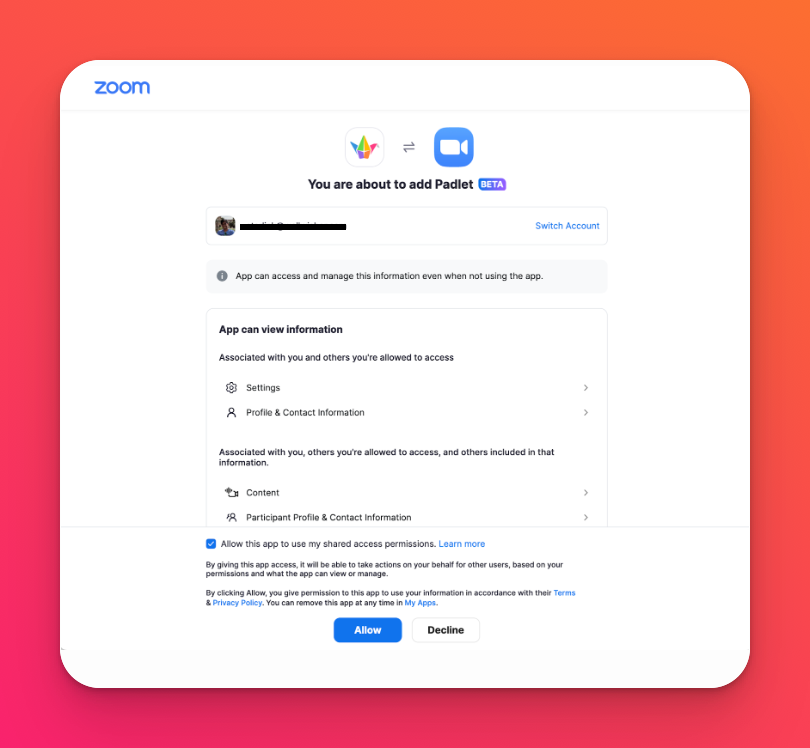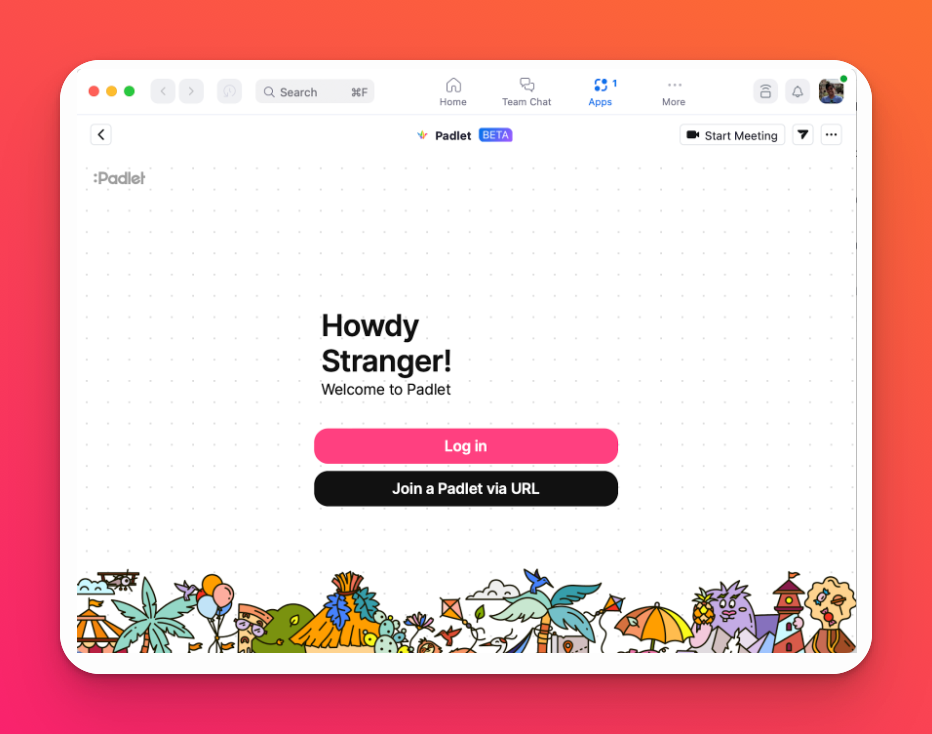Use the Padlet app on Zoom
Using Padlet during your Zoom call? Try out the Padlet app located within Zoom! This guide will walk you through adding, using and removing the Padlet app on Zoom.
Adding the Padlet app from the Zoom App Marketplace
- Open our Zoom App Marketplace page here.
- Click Add to add Padlet to your Zoom account.
- When asked to authorize permission, make sure to check the box that states, 'Allow this app to use my shared access permissions.'

- The following page should open in your Zoom client:

Adding participants and accepting invitations
You can add Padlet for Zoom directly from an invite from another participant while in a Zoom meeting.
To invite a participant during active Zoom Meetings:
- Click the Invite users to use app button on the top right corner of your Zoom window.
- Select which users you want to invite to use the Padlet app for Zoom and click Invite.
When being sent an invite to use the Padlet app for Zoom, accept the invitation and follow the instructions.
Using the Padlet app for Zoom
You can use Padlet for Zoom in the following ways:
Opening a padlet within Zoom
With the Padlet app for Zoom, you are able to open any padlet you want within Zoom. You can join a padlet directly, pick from your most recent padlets or search for a padlet you have access to. This enables you to take notes, refer to your notes, open images, and view YouTube videos on a padlet during a Zoom meeting.
Collaborating on a padlet with your meeting attendees
When you click on the Collaborate button with the Padlet app for Zoom open, all your participants are invited to collaborate with you on Padlet within Zoom.
Meeting attendees will be invited to download the app, and the app will open on the same padlet that you are on, even as you navigate between padlets.
Your attendees can now collaborate on the padlet by posting with text, images, videos or a rich variety of attachment formats to bring your Zoom meeting to life.
Sharing a Padlet slideshow in high resolution
When you share a slideshow with the Padlet app for Zoom, participants can follow your Padlet slideshow at their own pace. They can traverse forward or backward in your slideshow without impacting your presentation.
If you open a slideshow within the Zoom app in collaborate mode, participants will be invited to download the app and follow along.
Opening your Padlet Slideshow within Zoom gives you the following advantages over just sharing your screen.
- Higher image quality: Screen-sharing streams a lower quality image to your participants. Using the slideshow feature on Padlet Zoom renders high quality slides to all your participants.
- Allow participants to follow at their own pace: In a normal screen share, the participant has to follow your slide and cannot linger on a slide after the presenter has moved on. The Padlet Zoom app allows participants to navigate through the slideshow, and also see a small picture of the presenter’s slide. Clicking on this picture brings them straight to the presenter’s slide.
Removing the Padlet app for Zoom
To remove the Padlet app for Zoom, visit your Added Apps page in the Zoom App Marketplace and click the Remove button next to the Padlet app.
Troubleshooting
If you have issues logging in, try removing the app and installing it again. Do note that not all attachments can be rendered on Zoom, therefore some attachments might need to be opened on the browser. If you have any problems with the Padlet app for Zoom, please contact us.

